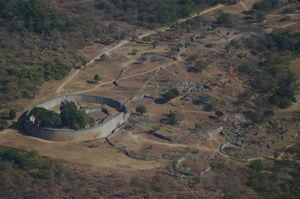Red River Free State: Difference between revisions
| Line 66: | Line 66: | ||
===Red River Army=== | ===Red River Army=== | ||
===Red River Air Force=== | ===Red River Air Force=== | ||
{{Main|Red River Free State Air Force}} | |||
==Economy== | ==Economy== | ||
==Demographics== | ==Demographics== | ||
Revision as of 17:58, 26 April 2019
The Republic of the Red River Free State | |
|---|---|
|
Flag | |
| Capital | Aconia |
| Official languages | Latin, English |
| Religion | Roman Catholic |
| Demonym(s) | Free Stater |
| Government | Republic |
• President | Octavius Brownwood |
| Independence | |
• | ??? |
• | ??? |
| Population | |
• 2014 census | 12,157,784 |
| Currency | ??? |
| Date format | dd-mm-yyyy AD |
| Driving side | right |
| Internet TLD | .rrfs |
The Red River Free State is a landlocked country in eastern Hesperidesia, situated between the nations of Kwalawi and Jafala. The capital and largest city of the Red River Free State is Aconia, and the government practices a stirct Seorsus policy to ensure white minority rule.
History
Background
Archaeological records date human settlement of the present-day Red River Free State to at least 100,000 years ago. The earliest known inhabitants were probably Maw people, who left behind arrowheads and cave paintings. The first Jafa-speaking farmers arrived during the Jafa expansion around 2000 years ago.
Societies speaking proto-Kwala languages first emerged in the middle Djankiki valley in the 5th century before moving on to the Red River highlands. The Red River plateau eventually became the center of subsequent Kwala states, beginning around the 7th century. Around the early 7th century, trade developed with Bungu merchants traveling from the coast, helping to develop the Kingdom of Nuo in the 8th century. This was the precursor to the more impressive civilizations that would dominate the region during the 8th to 11th centuries, evidenced by ruins near Lasila, and by other smaller sites. The main archaeological site uses a unique dry stone architecture.
The Kingdom of Nuo was the first in a series of sophisticated trading states which had developed in the area by the time the first Exponential explorers arrived from southern Hesperidesia. These states traded gold, ivory, and copper for cloth and glass.
From about 900 until 1048 the Naka Empire also held territory within the boundaries of the modern Red River Free State, capturing a significant portion of the Nuo Kingdom. This state further refined and expanded upon Nuo's stone architecture, which survives to this day at the ruins of the empire's capital of Nakajuba.

